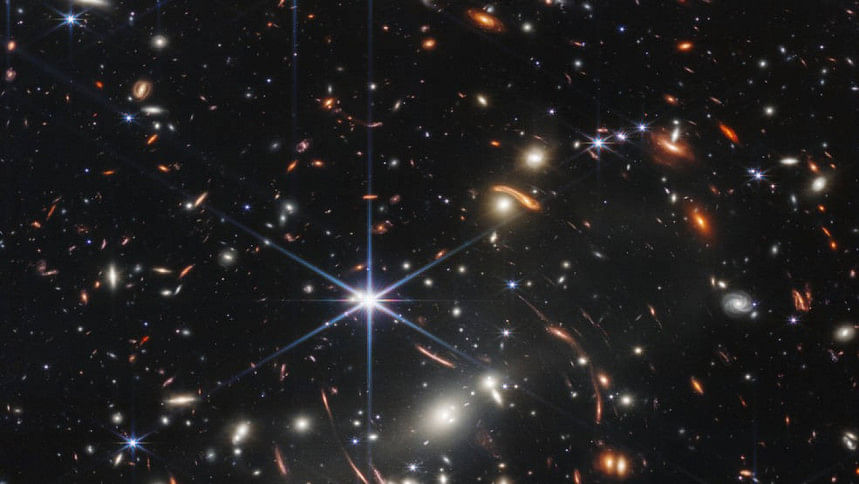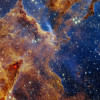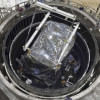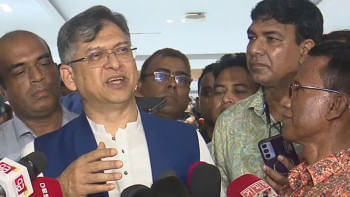NASA reveals James Webb's first cosmic image

After months of waiting, NASA has finally started to reveal the cosmic images taken by the world's biggest and most powerful space telescope yet, James Webb Space Telescope.
US President Joe Biden officially unveiled the first cosmic image taken by NASA's James Webb Space Telescope during an unveiling event in the White House earlier today (July 11 US time).
What is this image?
The image (seen above) is of the galaxy cluster named SMACS 0723, which is known as Webb's First Deep Field.
According to official information by NASA, the image shows a patch of sky that is approximately the size of a grain of sand held at arm's length by someone on the ground. Yet, it "reveals thousands of galaxies in a tiny sliver of vast universe".
Dubbed by NASA as the "deepest infrared image of the universe yet", the image shows faint cosmic structures in extremely faraway galaxies, offering "the most detailed view of the early universe to date".
How was this image taken?
This image of the deep field was shot by James Webb's NIRCam (near-infrared camera).
NASA describes the deep field of cosmic structures as "a composite made from images at different wavelengths, totalling 12.5 hours".
According to the company, this deep field achieves depths at infrared wavelengths that surpass the Hubble Space Telescope's deepest fields, which reportedly took weeks instead of the recent record of just over 12 hours.
What does this image show?
According to NASA, this is the image of the galaxy cluster SMACS 0723 as it had appeared 4.6 billion years ago. Because of the combination of mass in the cluster, the surrounding acts as a gravitational lens. Thus, it is possible to magnify the more distant galaxies behind it, revealing a number of undiscovered cosmic structures.
James Webb's NIRCam was able to focus on the distant galaxies, showing never-before-seen faint structures such as star clusters and diffuse features.
Research is already underway regarding the history and mass of the compositions that have been discovered. NASA expects to deliver new information regarding these clusters soon.
More full-colour images from the James Webb Space Telescope are due release today, which can be viewed at a live NASA TV broadcast. You can also check out NASA's official website or their YouTube channel to catch more information and their latest livestreams.

 For all latest news, follow The Daily Star's Google News channel.
For all latest news, follow The Daily Star's Google News channel. 








Comments